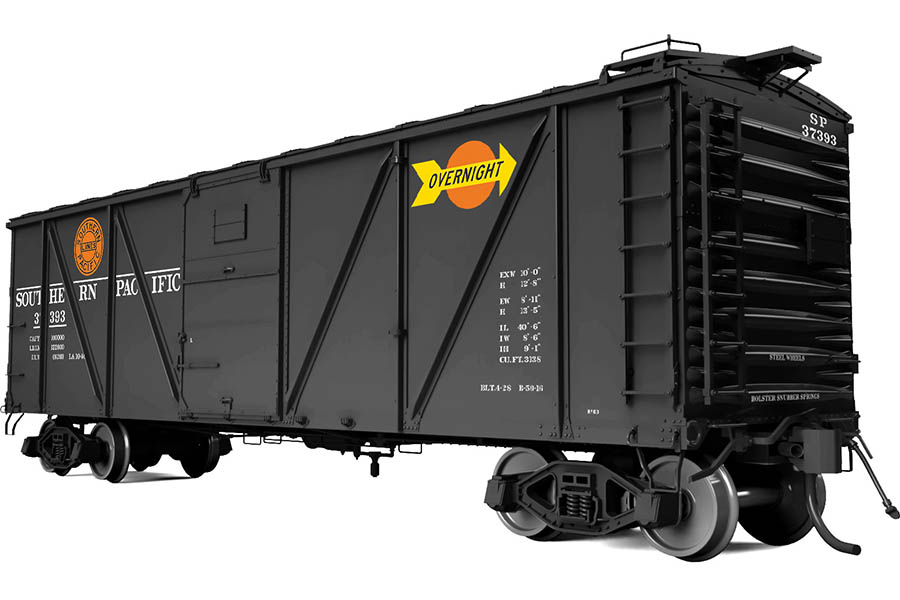This time we're continuing my series on Bowser's X31 and X32 kits (links to the previous three parts at the bottom of this post) by looking at the "plain" X31A class boxcar. The X31As were built in 1934 most of these are general service AAR mechanical designation "XM" cars. There were other subclasses as well, which pushed the class to over 7,000 cars still in service in 1950 spread between several numbering series. These cars were still the second largest class of boxcars on the PRR until the new post-war cars started arriving, meaning the X31s were fairly common to see around North America and even as far away as the west coast where I model.
I should note here that the cars I'm showing came from Bowser kits bought in the early 2000s, some of the cars don't have the best artwork for the pad printing, especially notice the changes in the "PENNSYLVANIA". I think Bowser's more recent runs have improved the lettering artwork, as seen on the PRR X32As in Part 2 if this series. The X31A class cars fill a nice spot behind the X29 in numbers and newer cars, as I wasn't able to find very many Red Caboose PRR X29 kits out on the west coast in the early 2000s when they came out, instead I picked up the mix of cars that are making up this series of posts. The PRR certainly had enough visually unique cars that a modeler could comfortably have 4-6 PRR cars and not own cars that looked like duplicates!
A newly tooled version of the X31As by Rapido (website here), which are currently in-stock as of 2022-10-27. I already have plenty of the Bowser X31 & X32 cars, so I'm not in the market or planning to purchase any of the new Rapido cars. However, I will happily suggest them to modelers who are expanding their fleets as they certainly are bringing the X31 & X32 modeling up to the standard of many other prototype cars with separate grabs and more complete underbody detailing, etc.
New Rapido Offering
 |
| Rapido X31A boxcar - photo from Rapido website (cropped to remove whitespace) |
X31A Models from Bowser
Roster 1950 ORER Data
PRR 67400-68999 X31A (1585 cars XM)
PRR 69000-69499 X31A (465 cars XM)
- (Note DD 4 cars XAP),
- (Note T 23 cars XMP),
- (Note BB 6 cars XMP)
PRR 70000-70399 X31A (394 cars XM)
PRR 76400-81099 X31A (4656 cars XM)
PRR 81100-81199 X31A (90 cars XM)
PRR 81100-81199 X31A (90 cars XM)
- (Note T 10 cars XMP, 12ft Staggered Doors )
Note T: Individual cars equipped with racks and hoists for handling spools of rayon yard on beams and differing in AAR Mech Designations from other cars in same series - XMP:
(T1) 69037, 69086, 69117, 69132, 69210, 69266, 69268, 69269, 69307, 69308, 69311, 69321, 69333, 69340, 69359, 69378, 69392, 69409, 69412, 69421, 69467, 69469, 69480. (23 cars)
(T2) 81103, 81142, 81148, 81149, 81151, 81154, 81168, 81172, 81181, 81189. (10 cars)
Note BB: Individual cars equipped with hoist beams for loading linoleum and differing in mech AAR Designation from other cars in the series XMP: 69014, 69071, 69135, 69230, 69274, 69371 (6 cars)
Note DD: Individual cars equipped with racks for hauling automobile engines and differ in mech AAR Designation from other cars in series: XAP: 69108, 69323, 69332, 69427 (4 cars).
 |
| PRR 67401 with very large (tall) road name, large numbers as well. (May 5, 2011 photo) |
PRR 67401 general service XM with placard warning about carrying a load of delicate machinery. The 67401 has some patches of black car cement applied to the roof and a number of chalk marks on the side of the car.
 |
| PRR 67526 with compressed name spelled out with larger numbers. (May 5, 2011 photo) |
PRR 67526 has some general weathering and some worn chalk marks.
 |
| PRR 67578 seems this lettering is almost too small with the name and the numbers a bit wide. (May 5, 2011 photo) |
PRR 67578 is showing more signs sooty roof with rusty sides and scrapes from the door rubbing on the car side. The car's also wearing several chalk marks for the car clerks and carmen to repair the door lock mechanism.
 |
| PRR 80265 with more correct lettering size and form. (May 5, 2011 photo) |
I forget if I relettered this car or if it actually had a good set of pad printing artwork on the base kit. In any case, the PRR 80265 is getting pretty crusty with rust. The reporting marks have been rubbed clean and reweigh data is still visible due to recent restenciling at P712 (station code on the PRR) in Januaary, 1952. I may end up actually doing a bit of de-weathering on the road name with a fiberglass brush.
The Weird "X31A" Double-Door Cars
Bowser has offered their 40ft double-door X31 model lettered as the following series of X31A double-door series of XMR (automobile loading racks).
%20X31A%20A2.jpg) |
| PRR 69743 X31A, with double 12ft doors. Probably needs redecalling for road name and number. (May 5, 2011 photo) |
Additional cars listed as "X31" class, but show with double doors. These should be some other suffix class, probably rebuilt.
1950 ORER Roster
PRR 59873-60110 (Note C 35 cars XM, 12ft Staggered double doors)
PRR 60224-60720 (Note C & E 145 cars XMR, 12ft Staggered double doors),
- (Note C & G 39 cars XM, 12ft Staggered double doors),
- (Note C & E, TT 28 cars XM, 12ft Staggered double doors)
PRR 69504-69997 (Note C & E 136 cars XMR, 12ft Staggered double doors),
- (Note C & G 32 cars XM, 12ft Staggered double doors),
- (Note C & E, TT 34 cars XM, 12ft Staggered double doors)
Note C: Center of roof is higher than sides IH 10'0" for 3'9" to each side of center. IH 9''4" at the sides.
Note E: Permanent Automobile stowing equipment various IH, etc. XMR
Note G: Individual cars in series NOT equipped with Automobile loading racks. (number of cars listed in the 69504-69997 series standard XM classification.) XM: 69505, 69510, 59539, 69542, 69544, 69559, 69564, 69582, 69590, 69594, 69612, 69612, 69622, 69680, 69631, 69668, 69591, 69718, 69729, 69730, 69741, 69764, 69768, 69780, 69791, 69818, 69867, 69877, 69889, 69927, 6936, 69939 (32 cars)
Note G: Individual cars in series NOT equipped with Automobile loading racks. (number of cars listed in the 69504-69997 series standard XM classification.) XM: 69505, 69510, 59539, 69542, 69544, 69559, 69564, 69582, 69590, 69594, 69612, 69612, 69622, 69680, 69631, 69668, 69591, 69718, 69729, 69730, 69741, 69764, 69768, 69780, 69791, 69818, 69867, 69877, 69889, 69927, 6936, 69939 (32 cars)
Note TT: Individual number of cars in series have loading racks made inoperative by securing in roof of car for the purpose of transferring cars to general service loading and differing AAR Mech Designation from other cars in same series AAR XM:
(TT1) 60230, 60232, 60250, 60256, 60273, 60309, 60311, 60385, 60393, 60453, 60473, 60475, 60496, 60509, 60512, 60534, 60545, 60566, 60573, 60641, 60646, 60647, 60667, 60669, 60683, 60694, 60700, 60715 (34 cars)
(TT1) 60230, 60232, 60250, 60256, 60273, 60309, 60311, 60385, 60393, 60453, 60473, 60475, 60496, 60509, 60512, 60534, 60545, 60566, 60573, 60641, 60646, 60647, 60667, 60669, 60683, 60694, 60700, 60715 (34 cars)
(TT2) 69516, 60531, 69575, 69576, 69581, 69598, 69603, 69604, 69607, 69619, 69626, 69652, 69655, 69659, 69677, 69694, 69750, 69753, 69807, 69831, 69849, 69872, 69873, 69892, 69896, 69913, 69917, 69924, 69926, 69949, 69951, 69972, 69987 (28 cars).
It's interesting that the X31As covered both single and double-door boxcars and auto rack boxcars.
In Closing
These X31A cars have shown good service for about 20 years at LMRC, showing mechanically they are quite good. The main issue with them now is the incorrect lettering, which has bugged me over the last 10 years or so. So I picked up some Speedwitch (now National Car Co) decals around 2012 for the X29s. At some point I'll patch these X31As with new road names.
%20X31B-A2.jpg) |
| PRR 61102, one of the X31B series automobile cars, which I'll cover next time in Part 5. (May 5, 2011 photo) |
So I'm getting to the end of covering the X31/32 series of cars. The next post in this series will probably be a quick one on the X31B (double door) car. After that I'll probably be doing a post on correcting the lettering on some of these cars. When I do the decal upgrades, I'll probably also install some basic brake levers and rods to the underside of the cars.
I'm also working on repainting some Red Caboose X29 kits, which may take most of my current stash of PRR boxcar decals, so I may need to get another set of decals (multi-car set) to cover several of these X31 and X32 cars. Plenty of 'projects' to be blogging about!
Jason Hill
Related Articles:
Freight Car Overview Index - One page with links to all my modeling blogs on freight cars.


-2.jpg)
.jpg)
.jpg)
.jpg)
.jpg)



%20-%20Downgrade%20to%20XM%20loading.jpg)


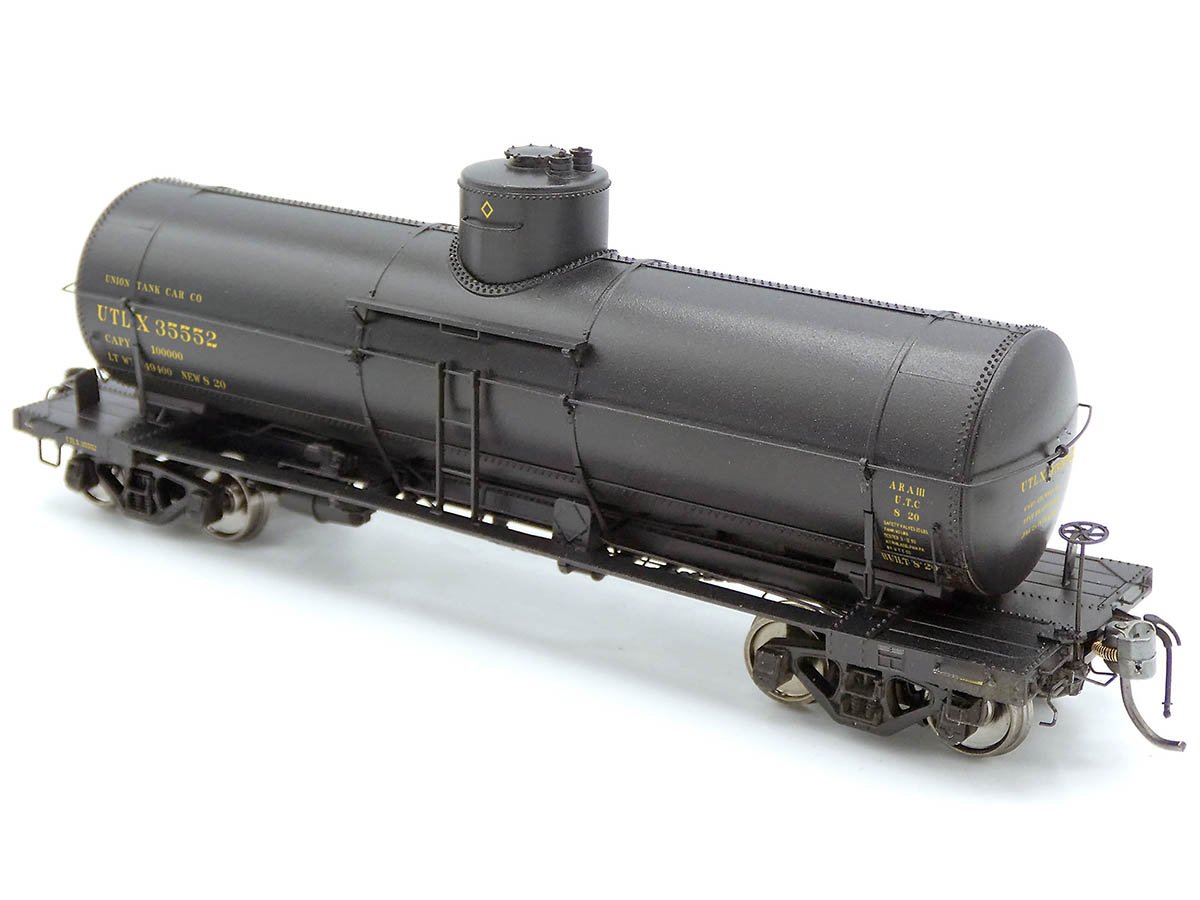


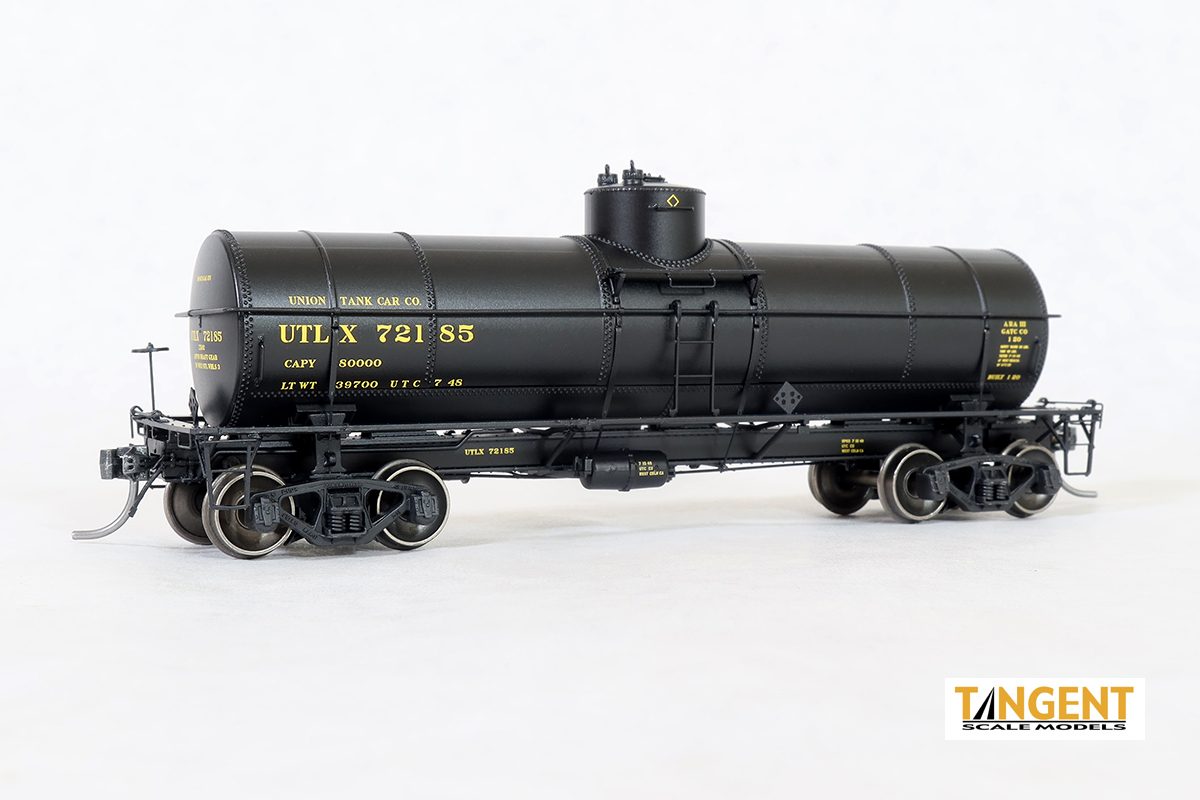

%208K-A2.jpg)
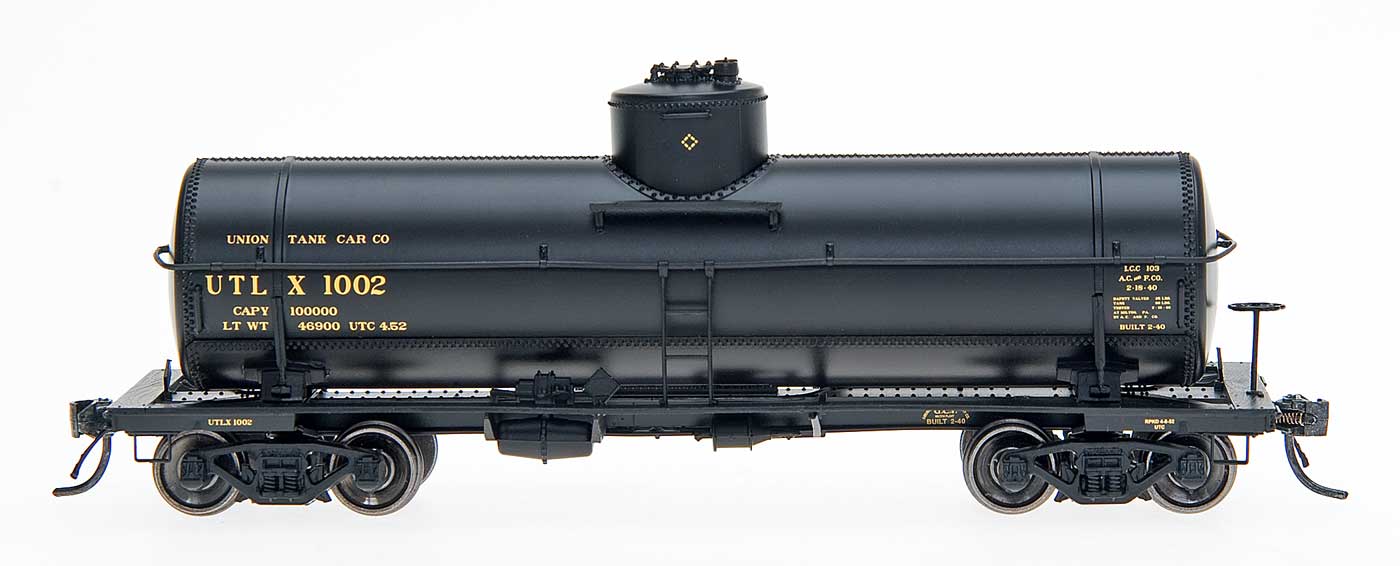



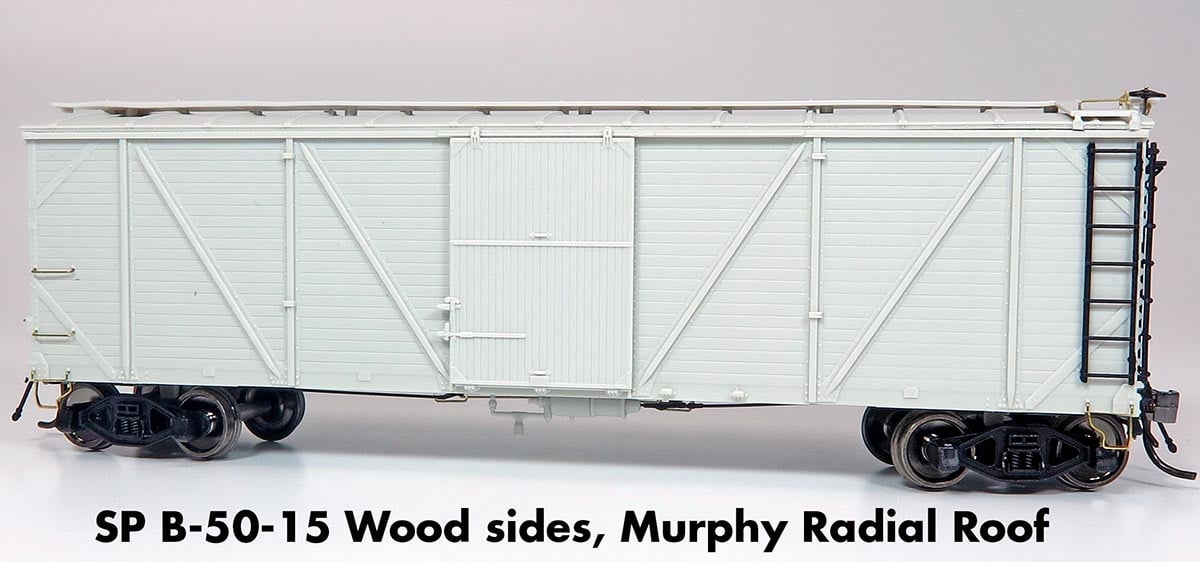

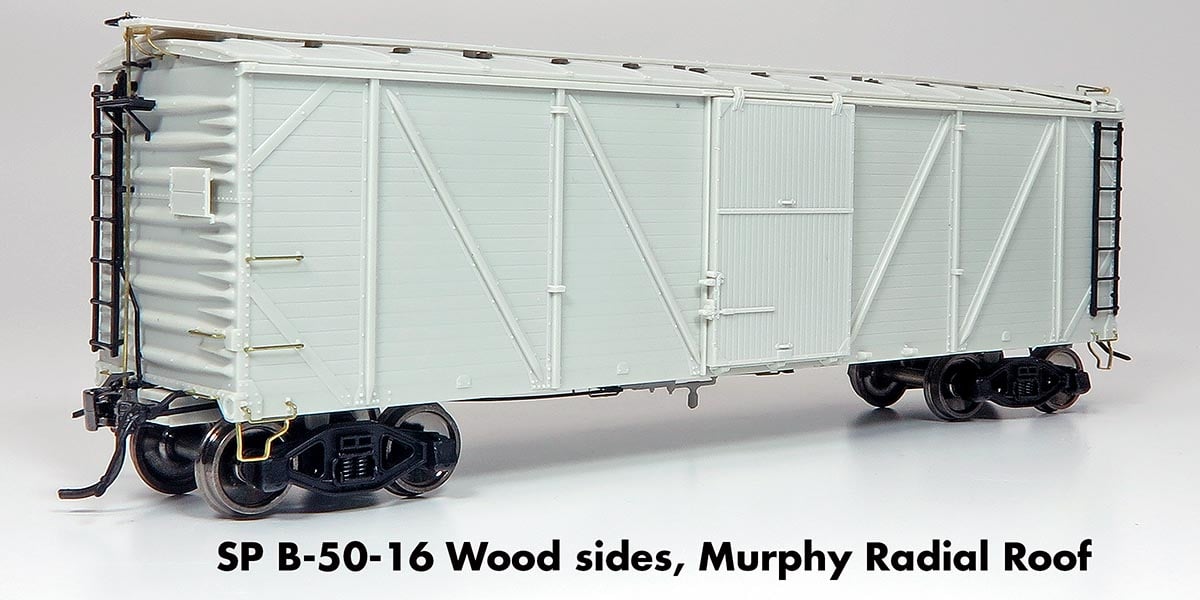



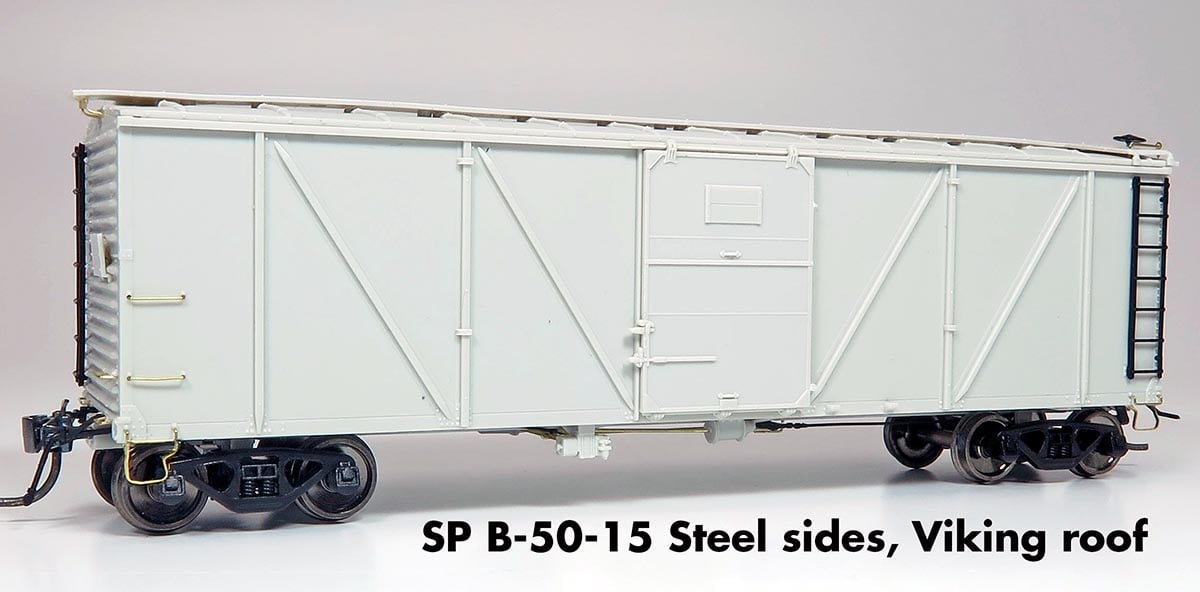


%2053360%20B-50-16%20-%20Paul%20Doggett-A2%20Camera%20july%202015%20416.jpg)








